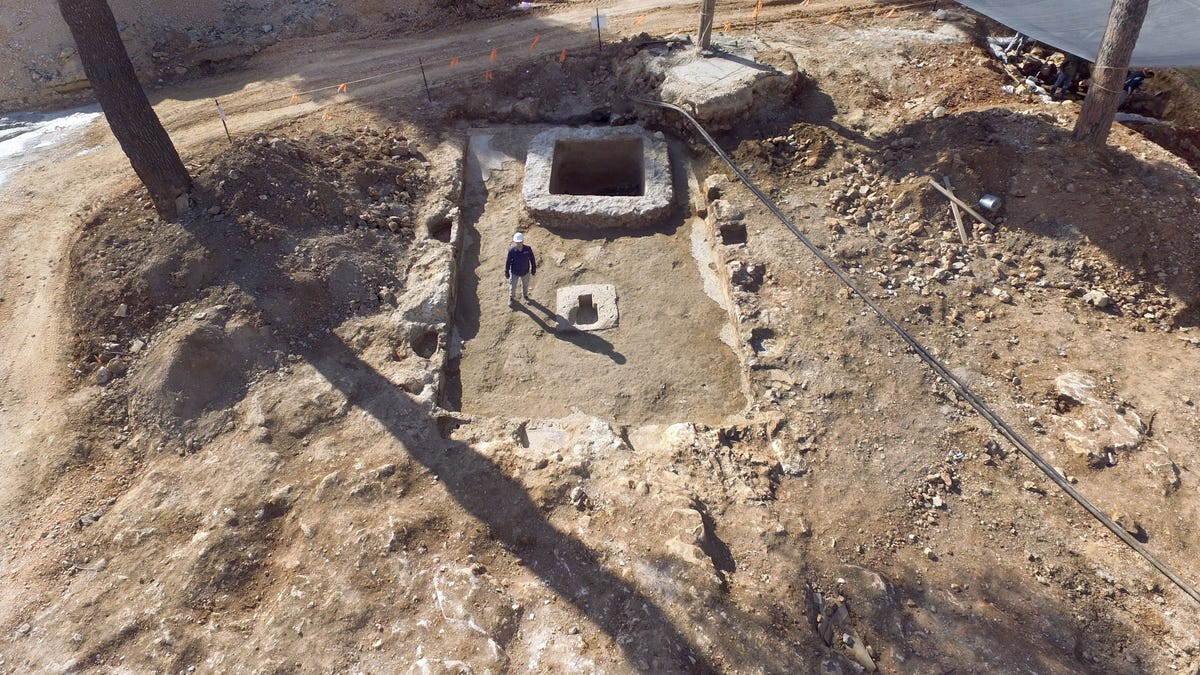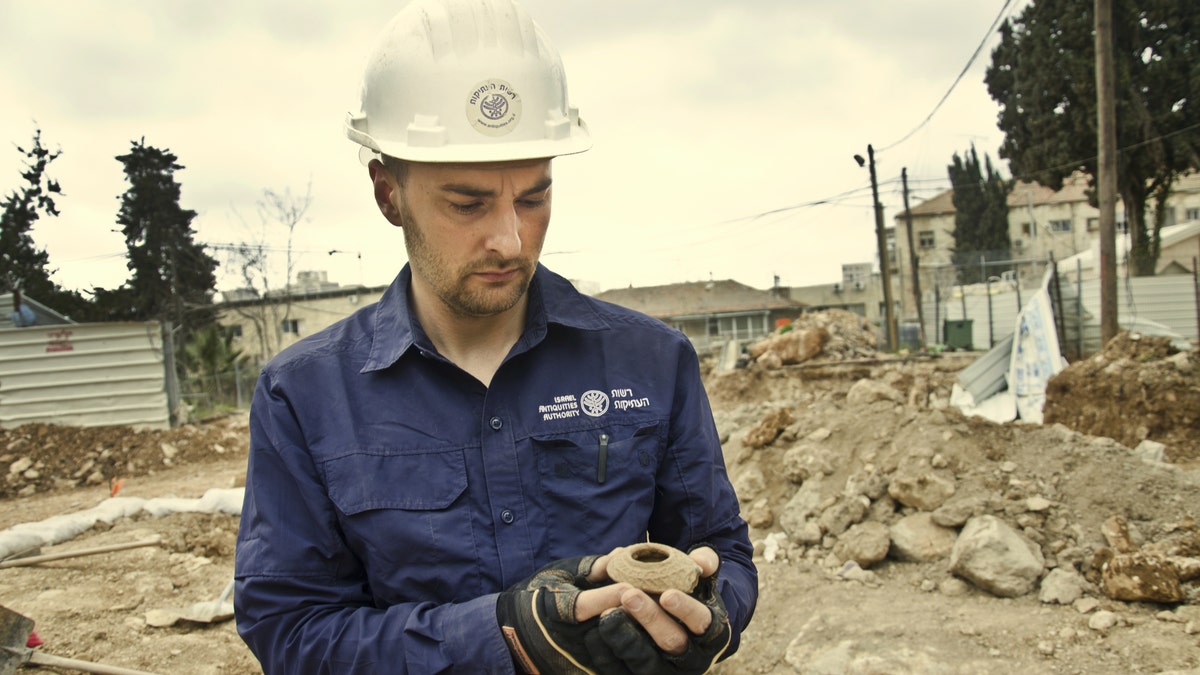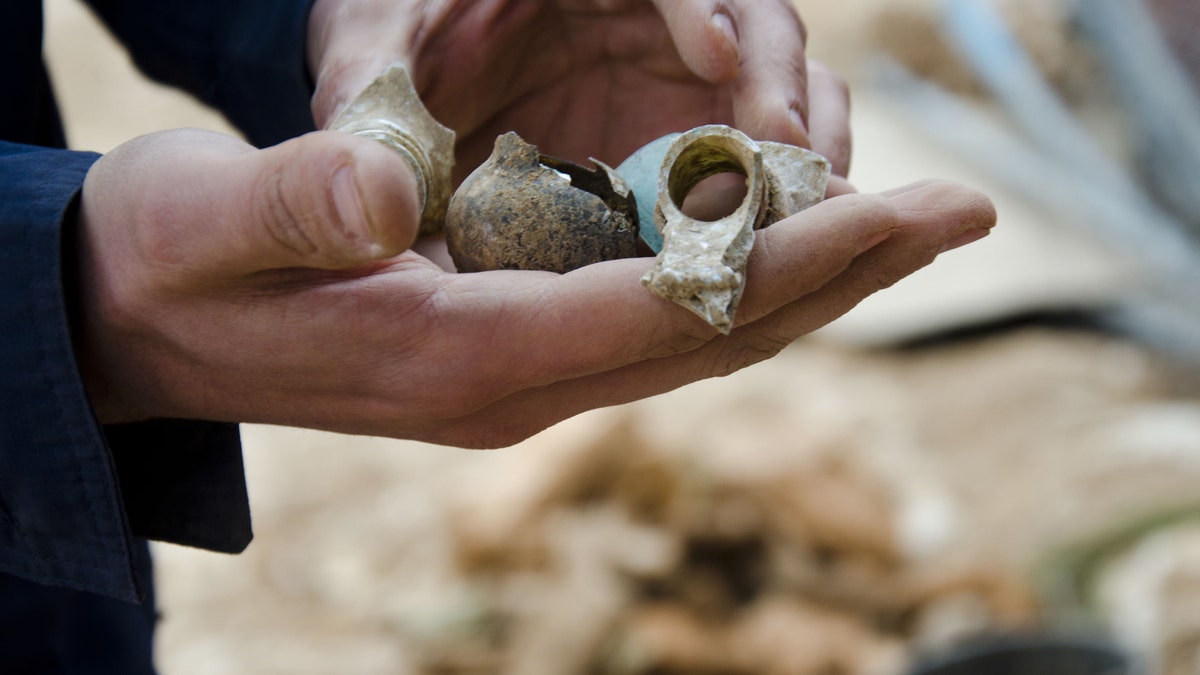
The winery. Aerial view: Guy Fitoussi, Israel Antiquities Authority.
Archaeologists have discovered a winery dating to the Roman or Byzantine period on the site that is set to house residential buildings for Jerusalem’s ultra-orthodox population.
The discovery is the latest twist for a site that has quite a history. It was home for the Schneller Orphanage from 1860 until World War II. During the British Mandate, its German inhabitants were expelled and a military base was established there. Following the British withdrawal in 1948, the compound was turned over to the Hagana, a Jewish paramilitary organization, and later served as an army base for the Israel Defense Force until 2008.
Related: New scans of King Tut's tomb may reveal hidden burial chamber
Ahead of the new construction, the Israel Antiquities Authority was tasked with doing an archaeological excavation. During the process, they found the winery that is about 1,600 years old that included a pressing surface paved with a white mosaic. There is also a pit for pressing the grapes and eight cells around the pressing surface that probably were used for storing the grapes, and possibly for making different flavors of wine.

Excavation director, Alex Wiegmann, holding an oil lamp from the Late Roman period that was found at the site.
"Once again, Jerusalem demonstrates that wherever one turns over a stone ancient artifacts will be found related to the city’s glorious past,” Alex Wiegmann, excavation director on behalf of the Israel Antiquities Authority, said in a statement. “The archaeological finds discovered here help paint a living, vibrant and dynamic picture of Jerusalem as it was in ancient times up until the modern era."
Amit Re’em, the Jerusalem district archaeologist, said the discovery demonstrates what can be achieved when scientists work with the ultra-Orthodox Haredi community.
Related: 7-year-old finds 3,400-year-old figurine in Israel

Numerous ancient pottery sherds and fragments of glassware that were found inside a plastered pit that was exposed at the site, indicating the possibility that a workshop operated there which used the ancient pit for discarding waste. (Israel Antiquities Authority)
“The general public is used to hearing of the clashes between the archaeologists and the orthodox community around the issue of the graves, but is unaware of the joint work done on a daily basis and the interest expressed by the ultra-orthodox sector,” he said in a statement. “The Israel Antiquities Authority is working to instill our ancient cultural heritage in this population, as it does with other sectors”.
The archaeologists believe that this winery served the residents of a large manor house, whose inhabitants made their living by, among other things, viticulture and wine production.
Next to the winery, archeologists also found evidence of a bathhouse – including terra cotta pipes used to heat the bathhouse and several clay bricks, some of which were stamped with the name of the Tenth Roman Legion. This legion was one of four Roman legions that participated in the conquest of Jewish Jerusalem, and its units remained garrisoned in the city until c. 300 A.D.
Related: Textiles from the time of King David found in ancient Israeli mine
One of the Roman legion’s main centers was in the vicinity of Binyanei Ha-Uma, located a few hundred meters from the current excavation site. The manor house may have been an auxiliary settlement to the main site, since it housed a bathhouse there.
